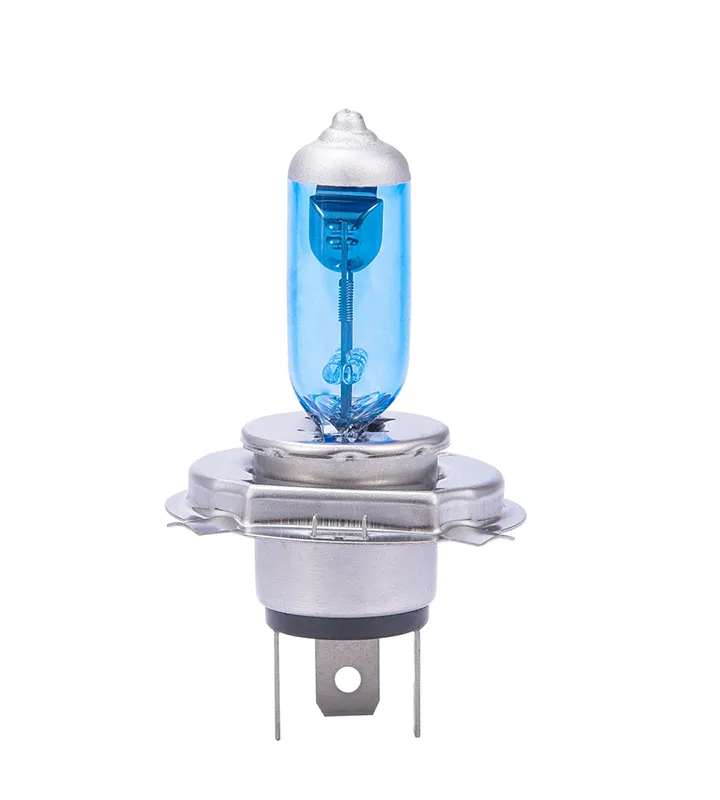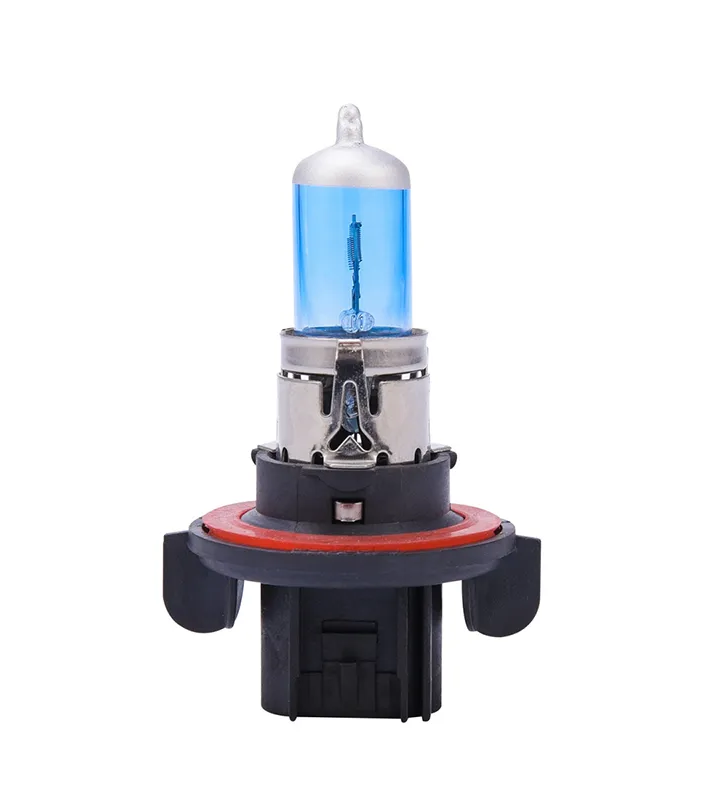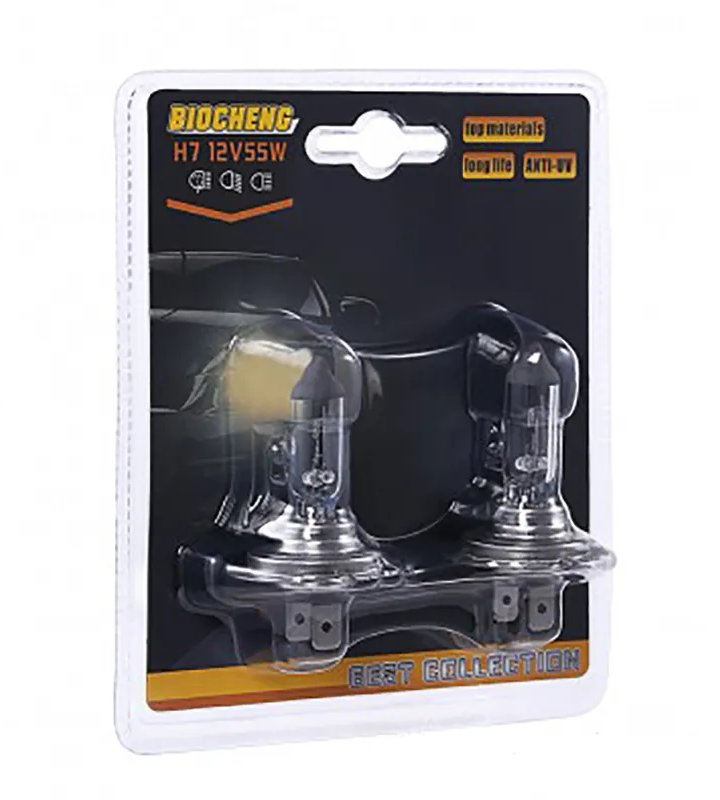
Yüksek parlaklığı korurken, NEWBROWN otomotiv halojen ampulleri enerji verimliliği için optimize edilmiştir. Geleneksel akkor ampullere kıyasla daha az enerji tüketirler, parlaklıktan ödün vermeden daha sürdürülebilir bir aydınlatma çözümü sunarlar.

Araç farlarınızın parlaklık seviyesini maksimuma çıkarın, NEWBROWN otomatik halojen ampullerini kullanarak. Bu ampuller, herhangi bir araca sorunsuz bir şekilde uyacak şekilde mükemmel bir şekilde üretilmiştir. Ayrıca, bu ampuller normal olanlardan daha uzun ömürlüdür, bu da onları daha uygun fiyatlı hale getirir çünkü yolda iyi görünürlük sağlamak için çok sık değiştirmek zorunda kalmazsınız. Zayıf ışık huzmelerini unutun ve güçlü NEWBROWN halojenlerini karşılayın!

Birinci sınıf NEWBROWN otomotiv halojen ampulleri ile algınızı değiştirin. Aracınız söz konusu olduğunda, sürüş sırasında net bir görüş sağlamak için parlak ve güvenilir bir ışık kaynağı sunmak üzere tasarlanmışlardır. Bu tür ampuller, günlük kullanımda yolda meydana gelen aşınma ve yıpranmaya dayanma yetenekleri göz önünde bulundurularak güvenlik ve performans düşünülerek üretilmiştir; ayrıca güzellik ve işlevselliği eşit şekilde artıran düzgün bir ışık dağılımı sağlar. Aracınızın aydınlatma sistemini şimdi değiştirin, böylece ileride sizi bekleyenleri daha iyi görebilirsiniz.

Araç aydınlatmasında çıtayı yükseltin NEWBROWN halojenleri ile. Her ampul, iyi çalışmasını ve uzun ömürlü olmasını sağlamak için sıkı kalite kontrollerine uygun olarak üretilmiştir. Ayrıca, birçok farklı marka ve modeldeki araba veya kamyonlara uyum sağladıkları için; bu ampuller, ışıklarını yükseltmek isteyen her sürücü için çok yönlü seçeneklerdir. Parlak, dayanıklı, ucuz bir aydınlatma çözümüne ihtiyacınız varsa — NEWBROWN'u tercih edin!

Gece güvenle sürüş yapın, NEWBROWN tarafından üretilen otomotiv halojen ampullerini kullanarak. Bu ampuller, karşıdan gelen trafiğin neden olduğu göz kamaştırma etkisini azaltırken kendi görünürlüğünüzü maksimize eden dar, yoğun bir ışık huzmesi yaymak için tasarlanmıştır. Bu tür ampullerin üretiminde kullanılan gelişmiş halojen teknolojisi, uzun saatler boyunca sürekli kullanıma rağmen tutarlı bir parlaklık sağlar. Bugün NEWBROWN'dan otomotiv halojenleri satın alın ve gece sürüşü yaparken daha önce hiç olmadığı kadar net görün!

2013 yılında kurulan Changzhou Zhanchen Brown Auto Spare Parts Co.,Ltd, otomobil ışıkları, özelleştirilebilir taşıt parçaları, otomobil halojen fenerleri ve LED farlar konusunda uzmanlaşmış önemli bir üretici ve satıcıdır. Fabrikamız yüksek kaliteli ürünler üretecek şekilde taahhüt eder ve bu ürünler, Amerika Birleşik Devletleri, Almanya, İtalya, İspanya, Polonya, Romanya, Kanada, Rusya, Avustralya, Birleşik Krallık gibi dünya genelindeki pazarlarda iyi kabul görür. Günümüzde, bazı taşıt eşyalarımız ve halojen fenerlerimiz sıkı kalite standartlarını karşılamaktadır ve E-mark, ROHS, DOT, CE ve ISO-9001 gibi sertifikaları bulunmaktadır. Ayrıca, endüstride tanınan markalar için OEM ve ODM tedarikçisi olarak hizmet veriyoruz.
Newbrown otomobil halogen ampulleriyle üstün görünürlük deneyimleyin. ampullerimiz, doğal gündüz ışığını yakından taklit eden, açıklığı arttırarak ve gece sürüşü sırasında göz yorgunluğunu azaltarak parlak, beyaz bir ışık yaymak üzere tasarlanmıştır. Standart ampullere kıyasla daha uzun ömürlü olan Newbrown hal
Newbrown otomobil lambalarıyla güvenle sürün. Lambalarımız sert hava koşullarına dayanacak şekilde tasarlanmıştır, yağmur, kar veya siste tutarlı performans sağlar. Gelişmiş lens teknolojisi ışığı eşit bir şekilde dağıtır, karanlık noktaları ortadan kaldırır ve önündeki yolu net bir şekilde gösterir. newbrown lambaları, herhangi
Yeni kahverengi otomotiv LED ampullerle otomotiv aydınlatmasının geleceğine adım atın. Bu enerji tasarruflu ampuller güçlü bir ışık ışığı sunarken daha az güç tüketir. Kompakt tasarım kolay montaj sağlar ve dokunmaya kolay yüzey güvenliği sağlar. yeni kahverengi LED ampuller sadece çevre dostu değil
Yeni kahverengi ksenon ampuller ile eşsiz bir parlaklıkla sürücünüzü aydınlatın. Bu ampuller, özellikle düşük ışık koşullarında görünürlüğü önemli ölçüde artıran yüksek yoğunluklu bir ışık üretir. Ksenon gazı teknolojisi, daha beyaz ve daha yoğun bir ışık çıkışı ile daha uzun ömürlü bir ampul
Otomotiv gövde kitlerimiz için malzeme seçimi, renk eşleştirme ve tasarım değişiklikleri dahil olmak üzere bir dizi özelleştirme seçeneği sunuyoruz. Ekibimiz, nihai ürünün benzersiz gereksinimlerinizi karşıladığından emin olmak için sizinle yakın bir şekilde çalışmaktadır.
Evet, otomotiv gövde kitlerimiz geniş bir araç modeli yelpazesi ile uyumlu olacak şekilde tasarlanmıştır. Müşterilerimizin çeşitli ihtiyaçlarını karşılamak için hem evrensel uyumlu hem de modele özel gövde kitleri sunuyoruz.
Araçlarınız için en iyi otomotiv LED ampulünü belirlemek için deneyimli satış ekibimizle danışmanızı öneririz. Ampul tipi, parlaklık ve aracınızın elektrik sistemiyle uyumluluk gibi faktörler seçimi etkileyecektir.
